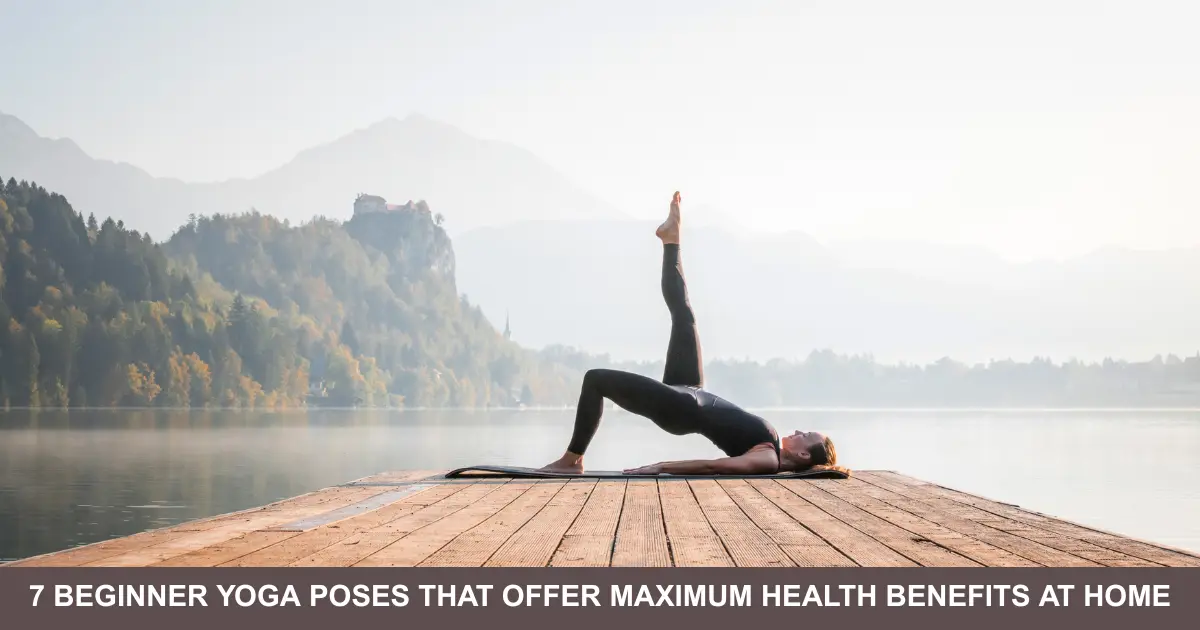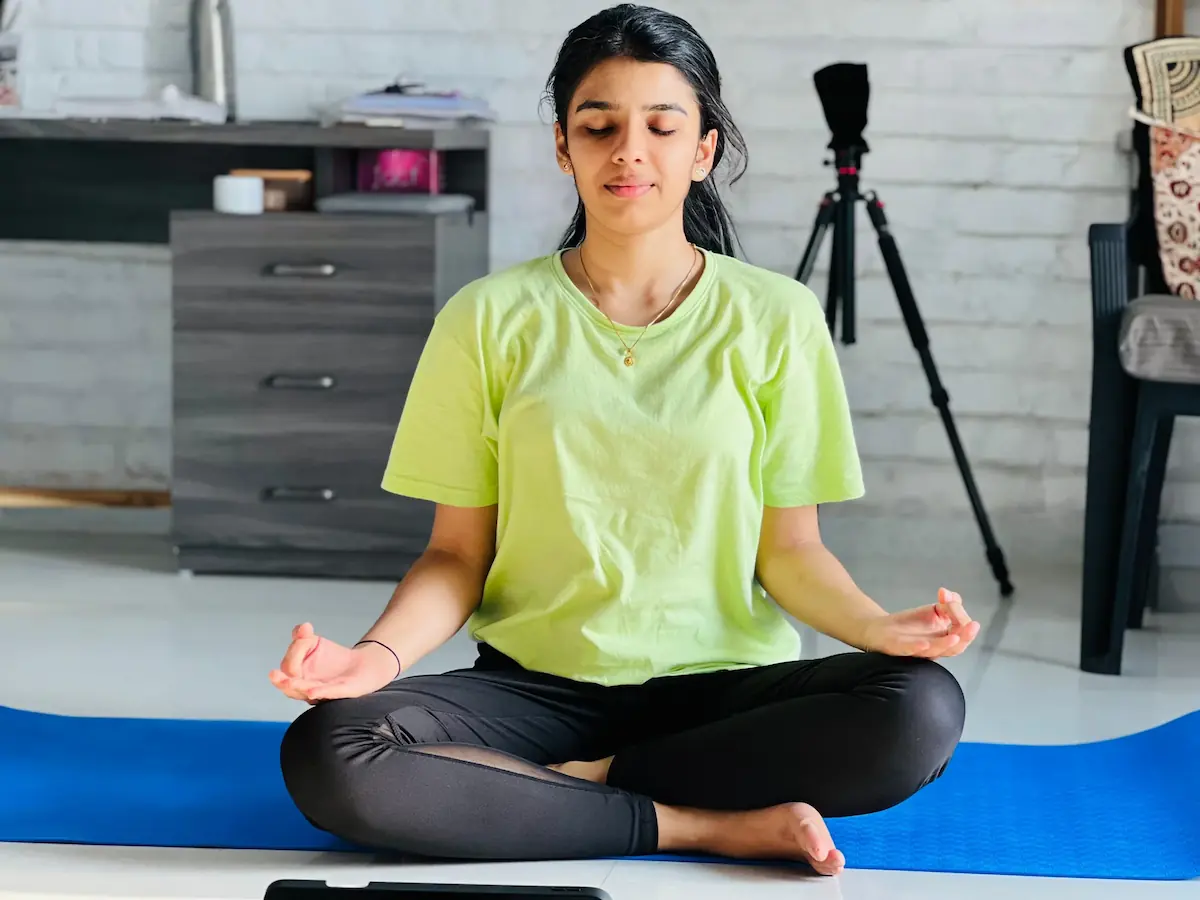Why Start Yoga at Home?
You don’t need a fancy studio or years of experience to begin yoga. In fact, many of the most beneficial poses are simple enough for complete beginners—and science backs their powerful health effects. Practicing yoga at home not only saves time but also helps reduce stress, increase flexibility, and boost overall wellness with just a few minutes daily.
Ready to feel more relaxed, stronger, and healthier? These 7 beginner-friendly yoga poses are a great place to start.
Tadasana (Mountain Pose)
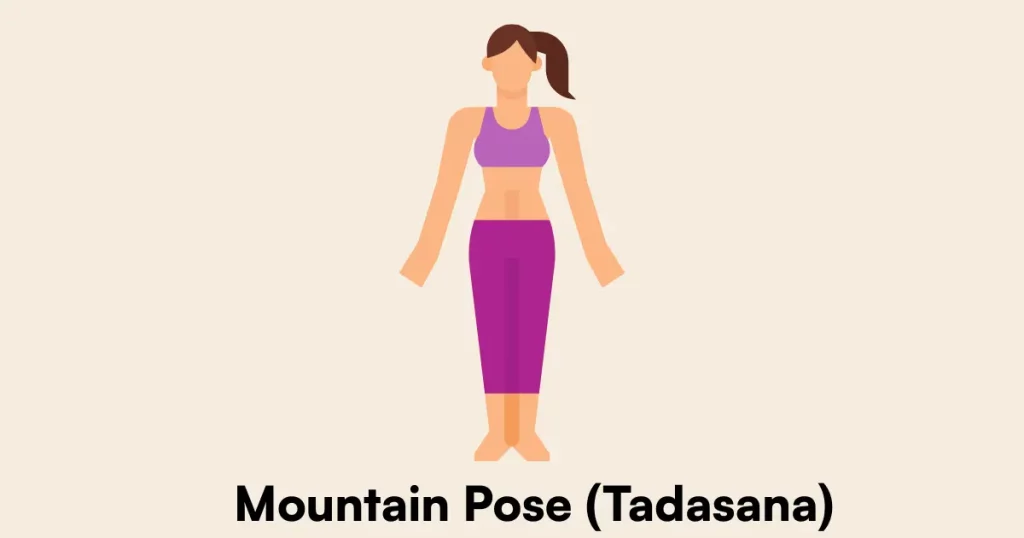
The foundation of all standing postures
How to do it:
- Stand tall with feet together.
- Keep your spine straight and arms at your sides.
- Inhale, raise your arms overhead with palms facing each other.
- Gaze forward and breathe deeply for 5–7 breaths.
Benefits:
- Improves posture and body awareness
- Strengthens thighs, knees, and ankles
Tips:
Keep your shoulders relaxed and weight evenly distributed on both feet.
Vrikshasana (Tree Pose)
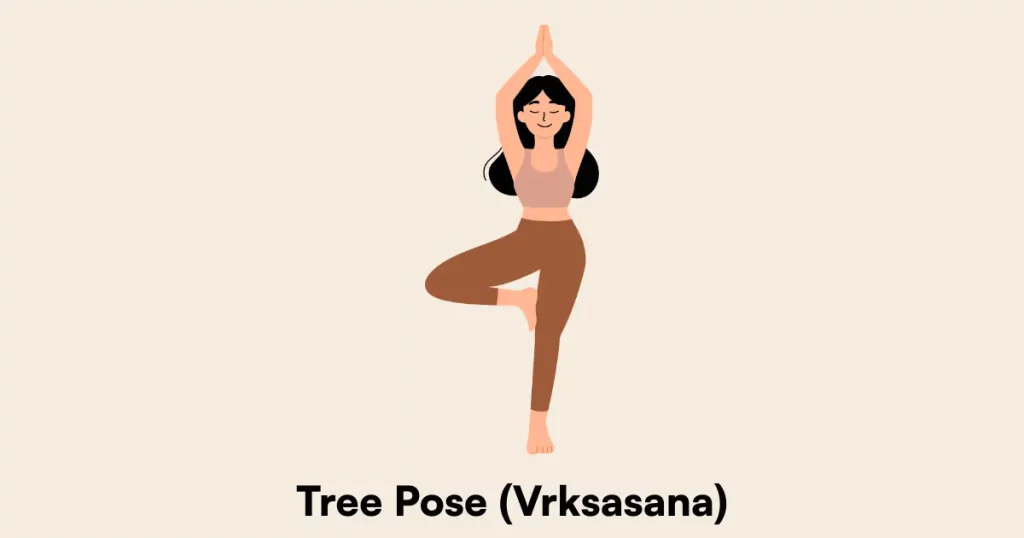
Balance your body, calm your mind
How to do it:
- Stand tall, shift your weight to the left foot.
- Place your right foot on your left inner thigh or calf (avoid the knee).
- Bring your palms together in prayer above your head.
- Hold for 5 breaths, then switch sides.
Benefits:
- Enhances focus and balance
- Strengthens legs and ankles
Precautions:
Use a wall for support if you have trouble balancing.
Bhujangasana (Cobra Pose)
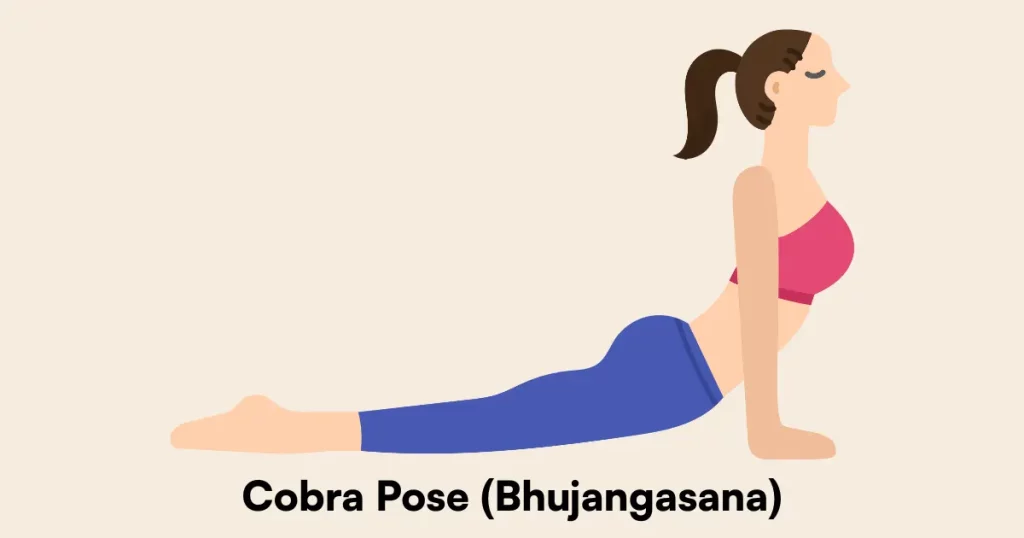
A gentle backbend to wake up your spine
How to do it:
- Lie on your stomach, legs extended, palms under shoulders.
- Press through your hands and lift your chest as you inhale.
- Keep elbows slightly bent and shoulders away from ears.
Benefits:
- Opens chest and improves spinal flexibility
- Reduces lower back tension
Tips:
Avoid this pose if you have severe back injuries.
Balasana (Child’s Pose)

Your go-to pose for deep relaxation
How to do it:
- Kneel on the mat, big toes touching, knees wide apart.
- Sit back on your heels, fold forward, and stretch your arms ahead.
- Rest your forehead on the mat and breathe deeply.
Benefits:
- Relieves fatigue and stress
- Gently stretches the lower back and hips
Precautions:
Avoid if you have knee or ankle injuries.
Setu Bandhasana (Bridge Pose)
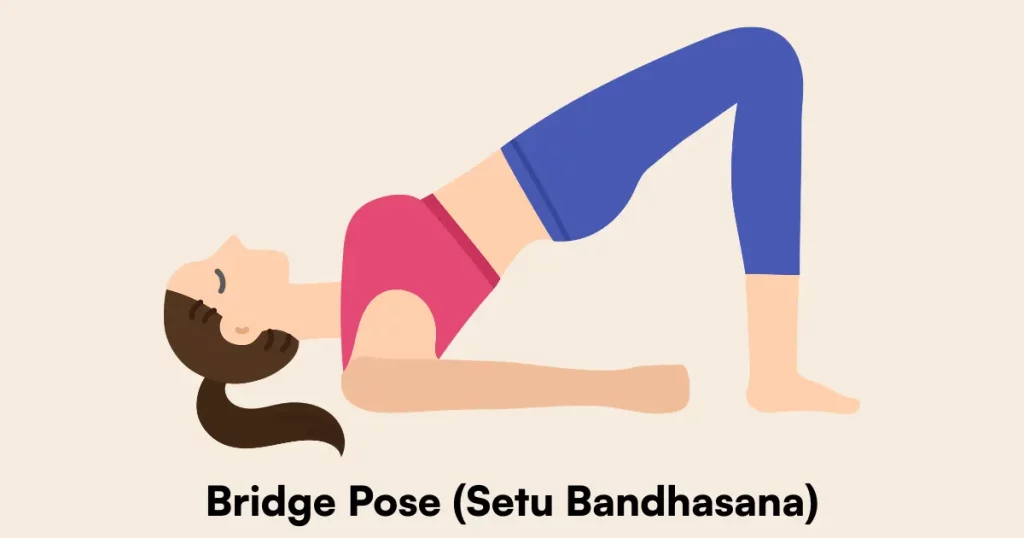
A gentle heart-opener and energy booster
How to do it:
- Lie on your back with knees bent and feet flat.
- Keep arms alongside your body, palms down.
- Press into your feet and lift your hips up.
- Hold for a few breaths, then slowly lower down.
Benefits:
- Strengthens back and glutes
- Improves digestion and mood
Tips:
Place a pillow under the sacrum for extra support.
Sukhasana (Easy Pose)

A peaceful seated pose for stillness and breathwork
How to do it:
- Sit cross-legged on a mat or cushion.
- Keep your spine straight and hands on knees.
- Close your eyes and breathe deeply for 1–2 minutes.
Benefits:
- Promotes mental clarity and calm
- Encourages proper breathing and posture
Precautions:
Use a folded blanket to sit if your hips are tight.
Adho Mukha Svanasana (Downward Dog)
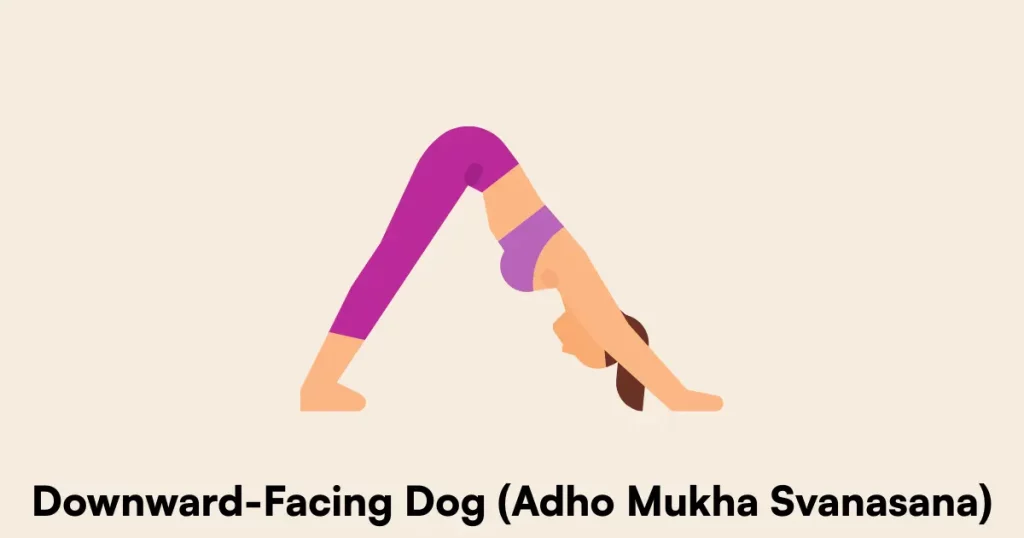
A rejuvenating full-body stretch
How to do it:
- Start on hands and knees.
- Spread fingers wide, tuck toes, and lift hips toward the ceiling.
- Form an inverted “V” shape with your body.
- Keep knees slightly bent and spine long.
Benefits:
- Builds upper body strength
- Boosts circulation and stretches the entire back
Tips:
Bend your knees if your hamstrings feel tight focus on a straight spine.
Final Words: Keep It Simple, Keep It Daily
You don’t need to be flexible, fit, or experienced to start yoga just consistent. Practicing even 10–15 minutes a day can boost your mood, energy, and overall well-being. Listen to your body, take your time, and enjoy the journey.
✨ Unroll your mat, take a deep breath, and begin today.
Frequently Asked Questions (FAQs)
Q1: How long should beginners hold each pose?
A: Start with 5–7 deep breaths per pose (around 30 seconds). Gradually increase as your stamina improves.
Q2: Can I practice yoga if I’m not flexible?
A: Absolutely! Yoga helps build flexibility over time. Begin with modifications and props if needed.
Q3: When is the best time to do yoga?
A: Morning or early evening is ideal. Choose a time when your stomach is empty and your mind is calm.
Q4: What should I wear while doing yoga at home?
A: Comfortable, stretchy clothes that let you move freely.
Q5: Do I need any equipment?
A: A yoga mat is helpful. You can also use a cushion, belt, or blocks if needed but not mandatory
